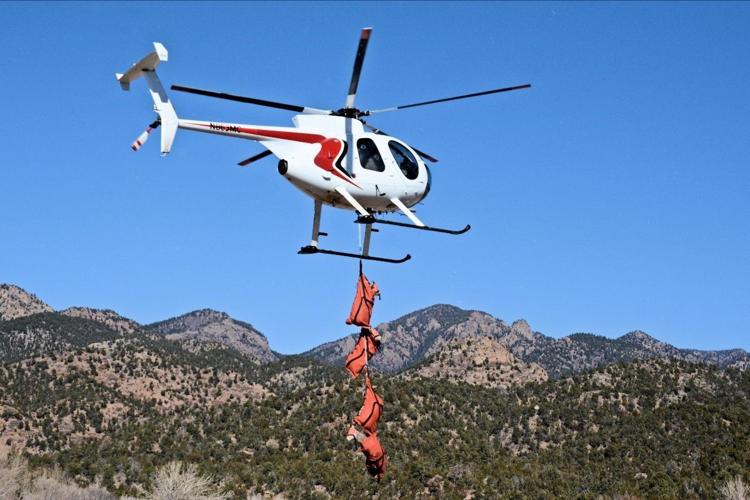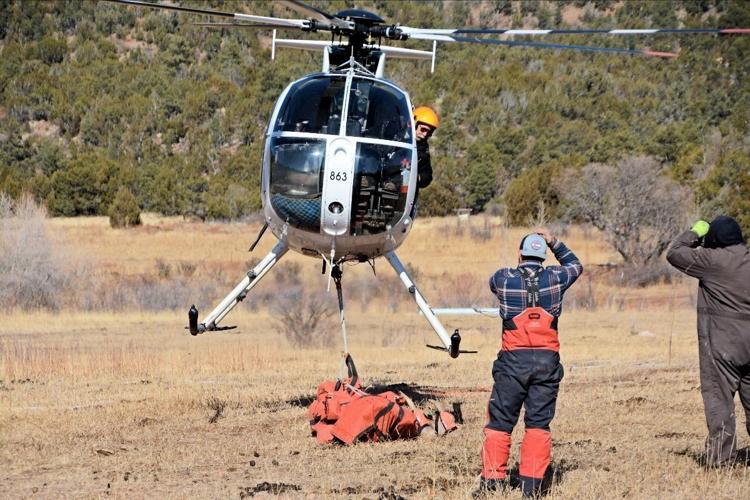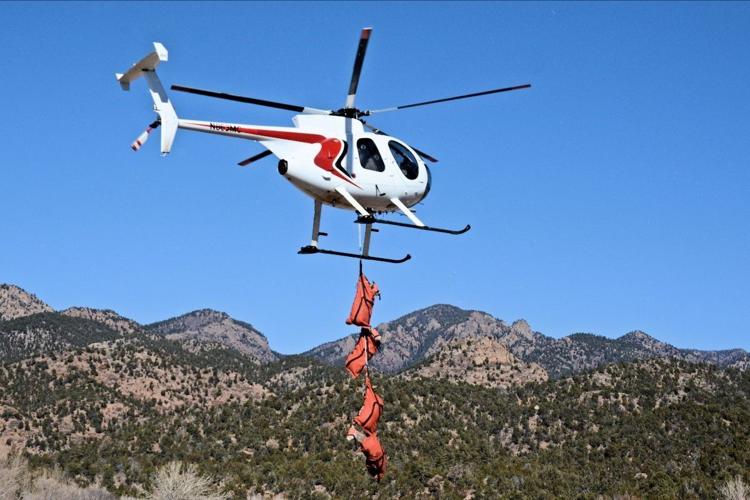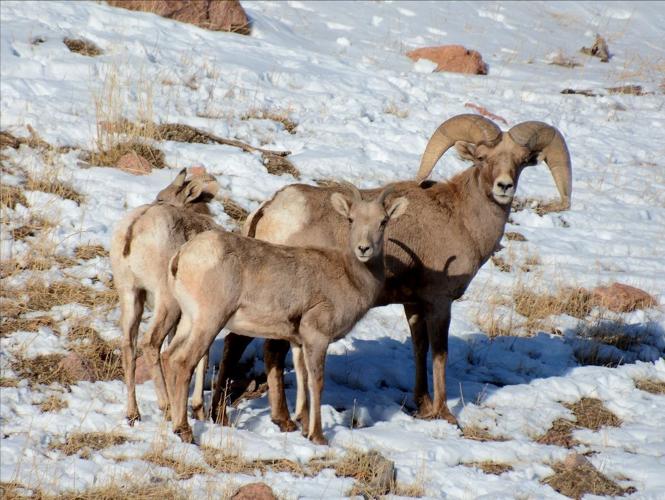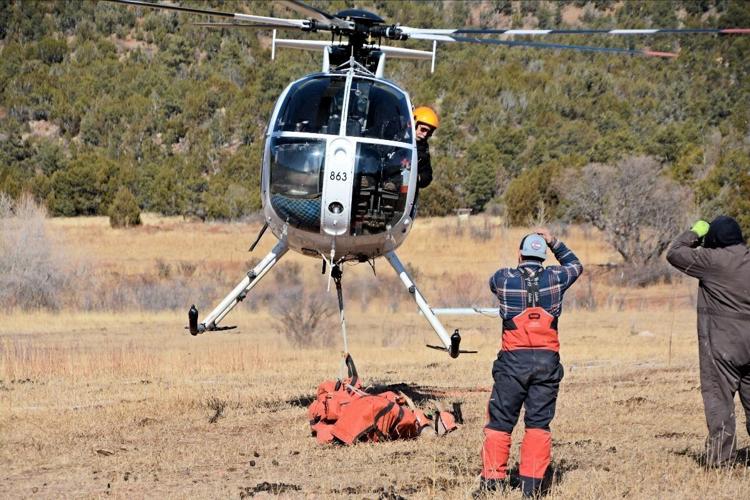Bighorn sheep get a new home in Beaver Creek Canyon
On Tuesday, members of the Colorado Parks and Wildlife staff launched a relocation project for a herd of bighorn sheep located near Garden of the Gods that was two years in the making, officials with the Department of Natural Resources announced Thursday.
Parks and Wildlife staff dropped a 70-by-70-foot net over nearly two dozen bighorn sheep they had lured with apple pulp. In the 90 minutes that followed, the team blindfolded and restricted the legs of the sheep as they untangled them.
The team then sedated the sheep and assessed their health while searching for disease, officials said. Each sheep received an ear tag and some were given transmitting collars before they were loaded into a trailer for shipment to Beaver Creek State Wildlife Area near Penrose.
Once there, the sheep were loaded into bright orange pouches, attached to a helicopter sling and flown into Beaver Creek Canyon to restore a herd that has been hit hard by disease. The 21 sheep chosen come from a Rampart herd that numbers 130, one of the most prolific in the state, officials said. With any luck, they’ll be as resilient as the original herd which was relocated from Tarryall Reservoir in South Park in 1944.
Bighorn sheep were on the brink of extinction due to disease and market hunting in the 1880s. A ban on hunting in 1885 protected the remaining sheep but the species needed a little extra push to fully rebound, officials said.
After four years of planning, biologists in 1944 captured 27 bighorn sheep using alfalfa, salt blocks and apple pulp to lure them into a 1.5-acre corral. The 27 sheep were used to restore herds near Georgetown, in Glenwood Canyon and near Garden of the Gods by accident.
The herd that ended up settling in the Rampart Range was originally set to be released on Pikes Peak. The truck, transporting them broke down in Green Mountain Falls, however. In response, the drivers simply released the 14 sheep on board. The drivers hoped the animals would go up the mountain, instead they settled in the Rampart Range.
The relocation didn’t come without challenges, one sheep was killed as the herd was standing on the tracks of the Colorado Midland Railroad when an ore train collided with it.
The 13 survivors settled above Colorado Springs and the state relocation efforts were largely successful with Colorado’s population rebounding to approximately 3,500 sheep in 1953. Today, their number is 7,000 across the state split up amongst around 80 herds. Only 18 herds have not been supplemented by relocated sheep.





